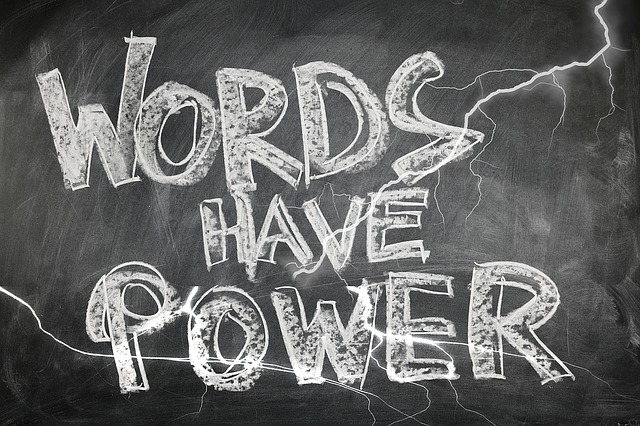In a rapidly advancing world where information is at our fingertips, education comes in various forms. One such form that has proven to be both timeless and effective is the written word. Whether it be through books, articles, or online content, writing has long been a powerful tool for educating readers on a wide range of topics. But what type of writing truly engages, informs, and educates its audience? In this article, we will delve into the different styles and approaches of writing that effectively convey knowledge and inspire readers to expand their horizons. Join us as we explore the intricacies of educating through words.
Contents
- 1. Understanding the Power of Educational Writing to Engage Readers on a Topic
- 2. Exploring the Different Writing Styles That Effectively Educate and Inform Readers
- 3. Unveiling the Art of Crafting Educational Content: Tips and Techniques for Effective Writing
- 4. The Role of Research in Writing Educationally-Rich Content: How to Seamlessly Blend Facts and Narratives
- 5. Harnessing the Power of Storytelling: How Narrative-driven Writing Enhances Reader Engagement and Comprehension
- 6. The Value of Clarity and Simplicity: Writing Techniques to Simplify Complex Topics and Boost Understanding
- 7. Mastering the Art of Persuasion: Educating readers through compelling and thought-provoking writing
- 8. Leveraging Digital Tools and Multimedia for Enhanced Educational Writing: A Modern Approach to Captivating Readers
- Frequently Asked Questions
- To Wrap It Up
1. Understanding the Power of Educational Writing to Engage Readers on a Topic
Educational writing is a powerful tool that has the ability to captivate readers and draw them in to learn more about a specific topic. When done effectively, it can engage readers on a deep level, sparking their curiosity and encouraging them to delve further into the subject matter at hand.
One of the key aspects of educational writing is its ability to present information in a clear and concise manner. By structuring content in a logical and organized format, readers can easily follow along and grasp the key concepts being presented. Additionally, the use of headings and subheadings helps to break up the text, making it more visually appealing and easier to navigate.
- Attractive formatting and appealing design can enhance the reading experience, making it more enjoyable for readers.
- Using relevant and relatable examples helps readers to better understand the topic and apply the knowledge in real-life situations.
- Well-researched and accurate information builds credibility and trust with readers.
- A conversational tone enables readers to connect with the content on a personal level, fostering a sense of engagement and interest.
By utilizing these techniques, educational writing can become a powerful tool to engage readers and encourage them to explore a topic further. Whether it’s an academic essay, a blog post, or an instructional guide, the power of educational writing lies in its ability to inform, inspire, and captivate readers, leaving a lasting impression.
2. Exploring the Different Writing Styles That Effectively Educate and Inform Readers
When it comes to educating and informing readers, various writing styles can be employed to make the content engaging and memorable. Utilizing different techniques can help capture the attention of readers and effectively convey information. Let’s delve into some of the writing styles that are known to accomplish this task with finesse:
3. Unveiling the Art of Crafting Educational Content: Tips and Techniques for Effective Writing
Crafting educational content is an art that requires a blend of creativity and expertise. To help you master this craft, we have compiled some valuable tips and techniques that will elevate your writing skills to new heights.
One key aspect of effective educational content is ensuring that it is well-structured and organized. Start by outlining your main ideas and breaking them down into subtopics. This will help you create a logical flow and make it easier for your readers to follow along. Utilize HTML formatting to enhance the visual appeal of your content, such as using headings and subheadings to clearly indicate different sections. Additionally, use bullet points or numbered lists to present information in a concise and easy-to-digest manner.
Another crucial element is maintaining a conversational tone throughout your writing. By adopting a natural human tone, you will establish a connection with your audience and keep them engaged. Avoid using jargon or complex terminology, instead opting for simple and clear language that everyone can understand. Furthermore, make use of bold text to highlight key points or important concepts. This not only helps with readability but also enables your readers to easily identify the most significant takeaways from your educational content. With these tips and techniques, you are now well-equipped to create impactful educational content that informs and inspires your audience.
4. The Role of Research in Writing Educationally-Rich Content: How to Seamlessly Blend Facts and Narratives
When it comes to creating educationally-rich content, research plays a vital role in ensuring the accuracy, depth, and credibility of your work. By employing a well-rounded research approach, you can seamlessly blend factual information with engaging narratives, resulting in a compelling and informative piece.
One of the key benefits of incorporating research into your writing is the ability to provide readers with accurate and up-to-date information. Through a comprehensive exploration of reliable sources such as academic journals, reputable websites, and expert interviews, you can gather the necessary facts to support your content. By backing your ideas with credible evidence, your writing gains authority, making it more compelling and trustworthy to your audience. Moreover, research allows you to provide a thorough understanding of the topic, ensuring that you cover all relevant aspects and leave no stone unturned.
- Include relevant statistics and data to enhance your arguments and make them more compelling.
- Quote experts in the field to add credibility and provide different perspectives.
- Provide real-life examples and anecdotes to connect with readers on a personal level.
- Use case studies and research studies to support your claims and illustrate their practical applications.
In conclusion, research is a fundamental aspect of creating educationally-rich content. It enables writers to blend factual information and narratives seamlessly, transforming their work into a captivating and informative masterpiece.
5. Harnessing the Power of Storytelling: How Narrative-driven Writing Enhances Reader Engagement and Comprehension
Storytelling is an art that has captivated human beings for centuries. It has the power to transport us to different worlds, evoke emotions, and connect us on a deep level. When it comes to writing, incorporating narrative-driven elements can greatly enhance reader engagement and comprehension. By harnessing the power of storytelling, writers can create a lasting impact on their audience.
One of the key benefits of narrative-driven writing is its ability to grab the reader’s attention from the start. By weaving a compelling and relatable story, writers can create a sense of curiosity and intrigue that keeps the reader hooked. This can be achieved by introducing relatable characters, setting a captivating scene, or engrossing the reader in a gripping conflict. Additionally, using descriptive language and vivid imagery transports the reader into the story, making them feel like they are experiencing it firsthand.
Moreover, narrative-driven writing also enhances reader comprehension. By presenting information in a story format, writers help readers connect the dots and make sense of complex ideas. Stories have a natural flow that guides readers through the plot, allowing them to follow along easily and understand the underlying message. By using anecdotes or real-life examples, writers can make abstract concepts more relatable and easier to grasp. This can be especially helpful when conveying information in educational or persuasive writing, where reader comprehension is crucial.
Incorporating storytelling techniques into writing is a powerful tool that allows for increased reader engagement and comprehension. By creating captivating narratives and presenting information in a story format, writers can effectively hold the attention of their readers, while also helping them understand and retain the message being communicated. So the next time you’re writing, consider harnessing the power of storytelling and watch as your words come to life in the minds of your readers. Let your creativity flow and create a unique and engaging reading experience!
6. The Value of Clarity and Simplicity: Writing Techniques to Simplify Complex Topics and Boost Understanding
When it comes to writing about complex topics, clarity and simplicity are key. It’s important to be able to communicate ideas effectively without overwhelming or confusing your readers. By using specific writing techniques, you can simplify complex topics and boost understanding. Here are some valuable techniques to help you achieve clarity and simplicity in your writing:
- Break down the topic: Start by breaking down the complex topic into smaller, more manageable subtopics. This allows you to focus on one idea at a time and explain it in a clear and concise manner.
- Use everyday language: Avoid jargon and technical terms that might alienate your readers. Instead, use simple and straightforward language that everyone can easily understand. If you must use technical terms, be sure to define them in a way that is accessible to your audience.
- Provide examples: Concrete examples can greatly enhance understanding. Use relevant and relatable examples to illustrate your points and help your readers grasp the concepts more easily.
By implementing these writing techniques, you can simplify even the most intricate topics and ensure that your readers are able to comprehend and connect with your content. Remember, clarity and simplicity are powerful tools that can help you build a strong rapport with your audience and make your writing more impactful.
7. Mastering the Art of Persuasion: Educating readers through compelling and thought-provoking writing
When it comes to writing, persuasion is a subtle yet powerful tool that can captivate readers and influence their thoughts and actions. Mastering this art is not just about convincing others, but also about providing valuable insights that leave a lasting impact. Through compelling and thought-provoking writing, you have the opportunity to educate your readers while stimulating their minds.
1. Evoke emotions: The key to persuasion lies in connecting with your readers on an emotional level. Utilize vivid storytelling techniques and descriptive language to evoke powerful emotions such as empathy, excitement, or curiosity. By appealing to their feelings, you can create a bond and make your message resonate deeply.
2. Present compelling evidence: A persuasive piece should be built on a foundation of credibility. Back up your claims with reliable sources, statistics, or expert opinions to strengthen your arguments. Providing well-researched evidence not only makes your writing more credible but also enhances your readers’ trust in your message.
8. Leveraging Digital Tools and Multimedia for Enhanced Educational Writing: A Modern Approach to Captivating Readers
In today’s digital age, utilizing digital tools and multimedia has become crucial for educators aiming to enhance educational writing and captivate their readers. By incorporating these modern approaches, educators can create a dynamic and interactive learning experience that not only engages students but also fosters creativity and critical thinking.
One of the key advantages of leveraging digital tools and multimedia is the ability to create visually appealing content. With the use of HTML, educators can format educational materials in an aesthetically pleasing manner, making it easier for students to navigate and comprehend. Additionally, multimedia elements such as videos, images, and interactive graphics can be embedded directly into the content, bringing the subject matter to life and enhancing the educational experience.
Furthermore, digital tools offer a range of features that can greatly enhance educational writing. Educators can utilize spell-check and grammar tools to ensure that written content is error-free and polished. Collaborative writing platforms allow students to work together in real-time, promoting collaboration and peer learning. Moreover, the use of bold formatting and unnumbered lists can help highlight key points and make content more scannable, facilitating a better understanding of the material. Overall, by leveraging digital tools and multimedia, educators can take a modern approach to educational writing, captivating readers and creating a dynamic learning environment.
Frequently Asked Questions
Q: What type of writing educates readers about a topic?
A: Various types of writing can effectively educate readers about a topic. However, some styles are particularly well-suited for this purpose. For instance, expository writing provides facts, statistics, and logical explanations to build understanding. This straightforward approach is commonly used in textbooks, scientific papers, and news articles, making complex subjects accessible to a wide range of readers.
Q: How does descriptive writing contribute to educating readers?
A: Descriptive writing aims to create vivid mental images by painting a detailed picture of a subject. While its primary purpose is to engage readers’ senses and emotions, it can also educate by providing a deeper understanding of a topic. This style is commonly used in travel writing, nature articles, or personal narratives that transport readers to a specific time or place, fostering a rich learning experience.
Q: Can narrative writing be educational as well?
A: Yes, absolutely! Narrative writing engages readers through storytelling, making it an effective tool for educational purposes. By presenting facts and information within a compelling narrative framework, it captivates reader attention and fosters retention of knowledge. Autobiographies, historical accounts, and case studies often employ this style of writing, allowing readers to immerse themselves in real-life experiences to gain valuable insights.
Q: How does persuasive writing educate readers?
A: Persuasive writing is often utilized to inform readers by presenting a specific viewpoint on a given topic. While its primary objective is to convince or influence readers’ opinions, it inherently educates them by providing well-researched evidence and compelling arguments. Opinion articles, editorials, and some advertising campaigns employ persuasive writing, encouraging readers to critically evaluate information and broaden their understanding.
Q: What about instructional or procedural writing?
A: Instructional or procedural writing serves as an educational tool by providing step-by-step guidance on how to perform specific tasks or activities. Whether it’s a recipe, DIY guide, or manual, this style breaks down complex processes into easily digestible steps, allowing readers to acquire new skills or expand their existing knowledge. The clear and concise nature of instructional writing ensures that readers can apply what they’ve learned effectively.
Q: Are there any other types of writing that educate readers?
A: Indeed! Other forms of writing, such as informative essays, academic papers, and encyclopedic entries, also serve educational purposes. These often delve deep into specific subjects, presenting extensive research, analysis, and citations to substantiate their claims. While they may be more specialized or academic in nature, they cater to readers seeking in-depth knowledge and a comprehensive understanding of the topic at hand.
Q: Are there instances where different writing styles can be combined to educate readers effectively?
A: Absolutely! In fact, blending different writing styles can often enhance the educational experience for readers. For example, an informative article can incorporate narrative elements to engage readers emotionally and create a stronger connection to the topic. Similarly, persuasive writing can make use of expository techniques to present solid evidence and logical reasoning, reinforcing the educational value of the content.
Q: What should one consider when choosing a writing style for educational purposes?
A: When selecting a writing style to educate readers, it is important to consider the intended audience, the complexity of the topic, and the desired learning outcomes. By understanding the readers’ needs and tailoring the content to suit their preferences, writers can effectively engage and educate readers about a topic. Additionally, employing a mix of different writing styles can help accommodate diverse learning preferences and ensure a well-rounded educational experience.
To Wrap It Up
In conclusion, various types of writing, such as informative articles, essays, and explanatory text, play a crucial role in educating readers about any topic, providing valuable knowledge and encouraging intellectual growth.









